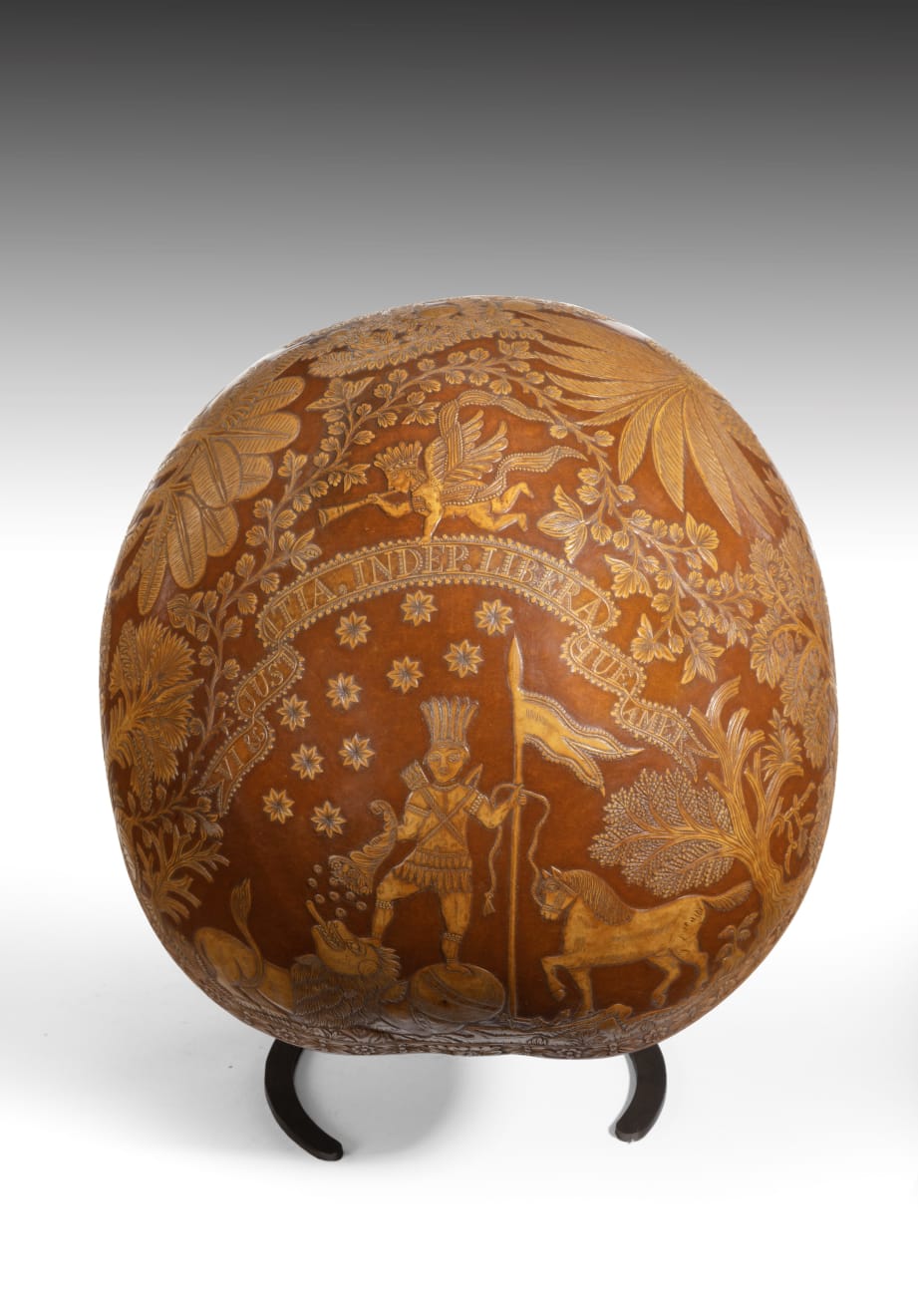SOLD TO THE METROPOLITAN MUSEUM OF ART: Relief Carved Gourd celebrating the Liberation of New Spain (Mexico) in 1821
29 x 26 x 12 cm
Further images
Finely-carved composition incorporating a Victorious native Mexican Indian beneath a Latin inscription which reads VI & JUSTITIA INDEP[ENDENS] LIBERAQUE AMER[ICA] – By strength and by justice America is independent and free, with an angelic Indian figure with trumpet above; the remainder of the gourd’s surface carved with abundant tropical natural motifs. The carefully-chosen symbols of this composition celebrate the triumph of America – Mesoamerica – the pre-Columbian cultures of this region over Spain, the conquistadores.
The central composition at the base of the gourd shows the victorious native warrior in traditional Aztec apparel, standing on two globes; The upper or ‘new’ world is inscribed Ameri[ca] and the vanquished globe underneath or the ‘old’ world is inscribed esp[agna].
The warrior’s other foot is placed on the head of the lion – perhaps the lion represents Spain and he is disdainfully tipping his bounteous cornucopia into the greedy mouth of the former oppressor with its tail between its legs, while it paws at the globe representing the old world. The lion has an outstretched tongue on which to catch the flowers, fruit, and corn which are spilling from it, satirising the desire of the former colonial masters to gorge themselves on the natural resources that they plundered. Alternatively, there is some similarity in the depiction of the face of the lion with the Aztec god Quetzalcoatl, so it could show the warrior returning the offerings to the traditional god, now supporting him.
The man is holding a flag attached to a spear which is staked into the ground and a tethered horse in his left hand. He has taken control of the horse (which had been a symbol of the Spanish), and the broken sceptre of Imperial power lies at his feet.
The remaining surface of the gourd is decorated with lush vegetation, palm trees and vines depicting a land of abundance and fertility, and notably the cacao plant, native to Mesoamerica. The choice of a gourd as the medium for this artwork roots it firmly in an organic sense in the folk tradition of the native culture and in the land itself.
We are grateful to Dr. Maya Jimenez, Adjunct Assistant Professor of Art History, Pace University & BMCC, for her help interpreting the iconography of this object based on photographs.












